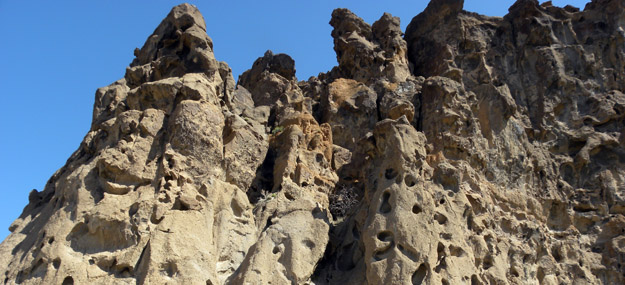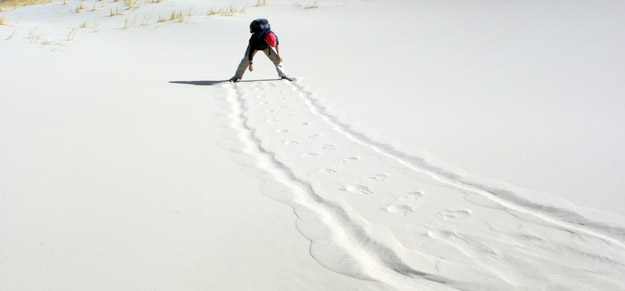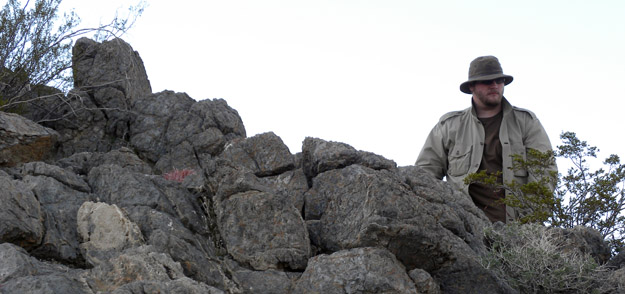ZZYZX, CALIFORNIA–One of the most attractive aspects of geology is how many materials and processes are included in the study of the Earth. Today’s field experiences show this diversity. One of the best reasons to teach in a liberal arts geology program is that we are continually in touch with topics outside of our original disciplinary training. This trip has been so much fun in part because all four of our faculty are involved at each of our stops, and we always learn from each other by having no fear about asking any questions. We seem to be successfully modeling this attitude with our students because they certainly have no hesitation in asking questions either.
Our teaching approach in the field has been to introduce students to the general framework of information about a particular site, and then let them explore the area, each bringing back questions, observations and specimens for a summary session with all the faculty. This has worked very well with this class because they are advanced and very enthusiastic students. Their curiosity has been an inspiration.
This morning was sunny, windy and cold (starting in the forties and not getting past 53°F). It hardly mattered though because we had so many interesting outcrops to study. Our first stop was Hole-In-The-Wall in the southeastern quadrant of Mojave National Preserve. Here are magnificent tuffs from an explosive volcano eruption about 18.5 million years ago. Dr. Pollock will have more to say about the geological details.
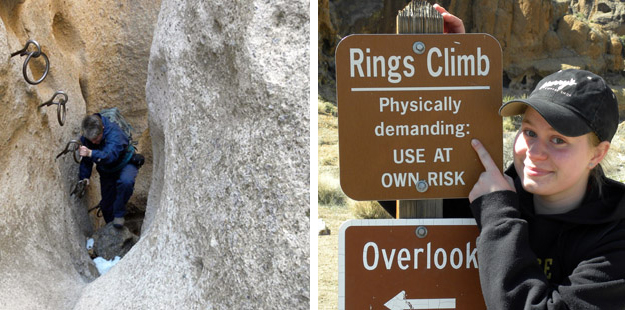
The loop trail around the major tuff exposure involved a steep climb through a slot canyon with the help of embedded rings. It was indeed physically challenging. Dr. Shelley Judge is shown climbing out with skill; Megan Innis points out the warning.
Our second stop was to climb the Kelso Dunes in the southwestern portion of the Preserve. The pile of sand here reaches 160 meters. It is trapped against the Granite Mountains in an endless swirl of winds. The students climbed the highest and most popular dune in the complex while the faculty chose to ascend a slightly lower but untrampled dune. Oddly enough, when we stood on these dunes in the middle afternoon, for the first time the wind stopped!
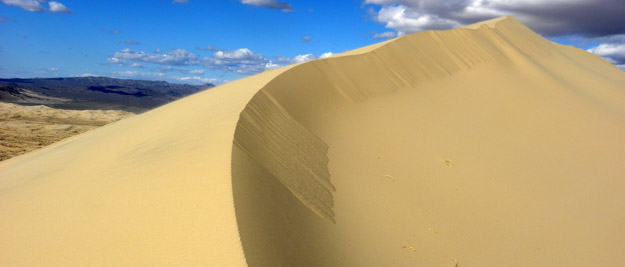
The graceful top of one dune at Kelso showing the shallower stoss side, steep lee side, and a small sand avalanche.
Our last two stops were relatively brief. One was at an outcrop of the Chambless Limestone, a Cambrian unit showing oncolites and dolomite-filled burrow systems. The other was at the tip of a lava flow from the cinder cones near the center of the Preserve. We returned to the station in the early evening with sand-filled shoes and sun-reddened faces. Another wonderful day in the Mojave.



